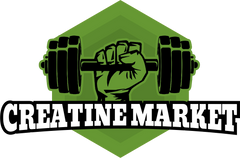Determining the right creatine dosage plays a crucial role in achieving your fitness and health goals. Whether you're new to supplementation or an experienced user, understanding proper dosing protocols can significantly impact your results. This comprehensive guide explores optimal dosing strategies across experience levels and various objectives, including cognitive benefits.
Beginner's Guide to Creatine Dosing
As a newcomer to creatine supplementation, starting with the right dosage helps minimize potential side effects while maximizing benefits. For beginners, a conservative approach often proves most effective.
Starting Protocol for Beginners
The recommended starting dose is 3-5 grams daily, taken consistently at the same time each day. This approach, while slower than loading protocols, allows your body to gradually increase creatine stores over 3-4 weeks. This method typically results in fewer side effects and proves easier to maintain.
Monitoring Initial Response
During your first month of supplementation, pay attention to how your body responds. Some initial weight gain from water retention is normal, typically ranging from 1-3 pounds. If you experience any digestive discomfort, consider splitting your daily dose into two smaller servings.
Intermediate Creatine Dosing Strategies
After several months of consistent supplementation, intermediate users often benefit from more nuanced dosing approaches.
Maintenance Protocols
For intermediate users, maintaining optimal creatine levels typically requires 5 grams daily. At this stage, timing becomes more relevant, and you might consider coordinating supplementation with workout schedules or specific meal times to enhance absorption.
Activity-Based Adjustments
Intermediate users should adjust their dosage based on training volume and intensity. During periods of increased training, consuming up to 8 grams daily may help maintain optimal muscle saturation. Conversely, during deload weeks, returning to 5 grams daily proves sufficient.
Expert-Level Creatine Dosing
Experienced users often benefit from more sophisticated dosing protocols tailored to specific performance goals.
Advanced Loading Protocols
Expert users might implement strategic loading phases before important competitions or during intense training blocks. This involves taking 20 grams daily for 5-7 days, split into four 5-gram servings, followed by a maintenance phase of 5-10 grams daily.
Periodization Strategies
Advanced users can synchronize creatine dosing with training periodization. During high-volume phases, maintaining higher doses (8-10 grams daily) may support recovery and performance. During maintenance phases, reducing to 5 grams daily helps maintain saturation while minimizing excess.
How Does the Body Use Creatine?
Creatine plays a fundamental role in cellular energy production, particularly during high-intensity, short-duration activities. Understanding this process helps explain why proper dosing is crucial for optimal results.
The ATP-CP Energy System
When you consume creatine, it enters your bloodstream and combines with a phosphate molecule to form creatine phosphate (CP) in your cells. This compound serves as a rapid energy source through the ATP-CP energy system. During intense exercise, your muscles break down adenosine triphosphate (ATP) to produce energy, converting it to adenosine diphosphate (ADP). Creatine phosphate then quickly donates its phosphate molecule to rebuild ATP, allowing continued energy production for explosive movements and high-intensity exercise.
Creatine Storage and Saturation
Your body has a finite capacity for creatine storage, primarily in skeletal muscle tissue. The average person stores approximately 60-80% of their maximum creatine capacity naturally. Through supplementation, you can increase these stores to 100% saturation, or roughly 160 grams for a 70kg person. This explains why initial loading protocols can accelerate benefits – they quickly fill these available storage sites.
Distribution of Creatine Throughout the Body
While roughly 95% of creatine is stored in muscle tissue, the remaining 5% distributes throughout other organs and tissues:
- Brain tissue uses creatine for cognitive function and neural energy production
- Heart muscle utilizes creatine for cardiac function
- Other organs maintain small creatine reserves for energy production
Creatine Dosing for Brain Health
Recent research highlights creatine's potential cognitive benefits, leading to specific dosing recommendations for brain health.
Cognitive Enhancement Protocol
For cognitive benefits, research suggests a daily dose of 5-10 grams proves effective. This amount helps maintain optimal creatine levels in brain tissue, potentially supporting memory, focus, and mental energy.
Long-term Brain Health
Studies investigating creatine's neuroprotective properties indicate that consistent supplementation with 5 grams daily may support long-term brain health. This dosage of creatine for brain health appears particularly beneficial for aging populations and those engaged in mentally demanding activities.
Body Weight Considerations
Your individual body weight influences optimal creatine dosing. A general guideline suggests:
Weight-Based Calculations
During maintenance phases, aim for approximately 0.03 grams of creatine per pound of body weight. This means a 180-pound individual might target roughly 5.4 grams daily, while a 220-pound person might aim for 6.6 grams.
Special Populations and Considerations
Different populations may require adjusted dosing protocols to achieve optimal results.
Vegetarian and Vegan Athletes
Plant-based athletes often benefit from slightly higher maintenance doses (6-8 grams daily) due to lower dietary creatine intake. This helps compensate for the absence of creatine from animal products in their diet.
Older Adults
Individuals over 50 might benefit from 5-7 grams daily, as research suggests aging may affect creatine absorption and utilization. Consistent supplementation becomes particularly important for this population.
Timing Your Doses
While total daily intake matters more than timing, certain protocols can enhance effectiveness.
Pre-Workout Timing
Taking 3-5 grams approximately 30-60 minutes before training may support performance during high-intensity activities.
Post-Workout Protocol
Consuming creatine with post-workout nutrition can take advantage of increased nutrient uptake. Combining it with carbohydrates and protein may enhance absorption.
Conclusion
The optimal creatine dosage varies based on experience level, goals, and individual factors. Beginners should start conservatively with 3-5 grams daily, while intermediate users typically benefit from 5-8 grams daily. Expert users might implement more complex protocols based on training phases and competition schedules. For cognitive benefits, 5-10 grams daily appears effective, with consistency being key across all applications.
Remember that individual response varies, and the most effective dose is one you can maintain consistently. Start with these guidelines, monitor your response, and adjust based on your results and goals. Always consult healthcare providers before beginning supplementation, especially if you have underlying health conditions or take medications.




